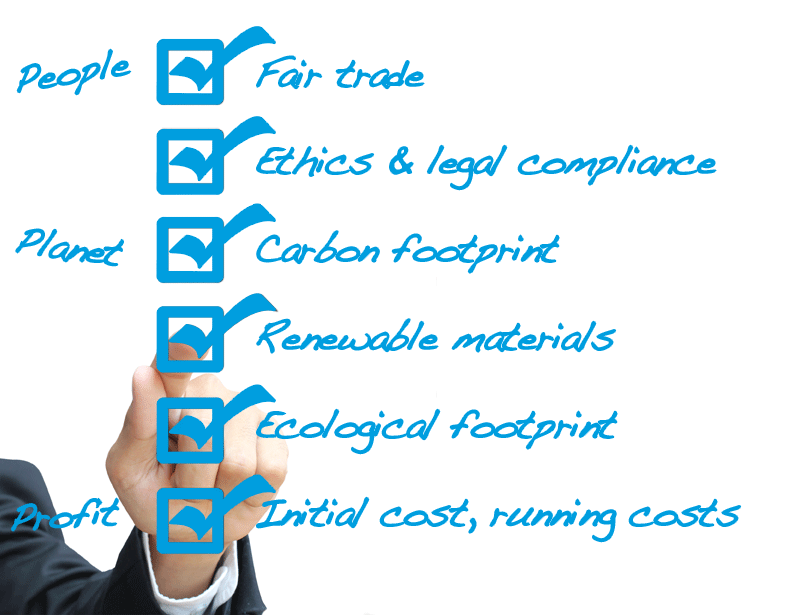The supply chain refers to all the enterprises that contribute to getting a product or service to the customer. It can include raw materials, parts, information, finances, warehousing, packaging, transport and contract services. How the supply chain members respond to sustainability issues will have an impact on the total sustainability impact of your products and your business.
The supply chain will impact on social, environmental and economic sustainability. The social sustainability issues might be reflected in how suppliers treat their workers and local communities. Whether they use renewable sources of energy and whether they are energy efficient will have an impact on the carbon footprint of the product or service.
Sustainable practice in the supply chain
Sustainable supply chain decisions
Your type of business and the availability of supply chain options will affect how you may be able to improve the sustainability of the supply chain. You might be able to prioritise buying local materials and using local suppliers. This can reduce the overall carbon footprint by reducing the amount of fuel used in transport.
You may be able to include sustainability criteria in your tenders and selection process for suppliers and services. The sustainability criteria could be added to your procurement guidelines, tender documents and standard selection criteria. They can also be used in standard clauses in contracts which will make it easier to monitor that the requirements are being maintained.
The criteria could include:
- Their calculations of levels of embedded carbon and how it is calculated
- Whether they have had any complaints, insurance claims or litigation for exploiting workers, environmental incidents or occupational health and safety
- Whether they use solar, wind power, plantation timber, recycled materials
- Whether they measure and try to reduce their greenhouse gas emissions
- Their measuring and reporting for example sustainability reports, environmental impact assessments, community impact assessments, financial reports, annual reports.
Sustainable supply chain information
Consumers and business customers are becoming more committed to sourcing products and service providers that are ’sustainable’ or ‘green’. Businesses are providing more information about the sustainability of a product. This usually includes any clever features that support sustainability – such as energy efficiency, reuse and recycling systems and innovative use of materials. The product information can also reflect the carbon footprint which usually refers to the level of carbon dioxide generated throughout the production and delivery of the product.
 Your information could highlight the renewable energy sources and the renewable or recycled materials used in production. You could also show how you have verified the track record and carbon footprint of your suppliers. Increasingly customers want to know about the options for product recycling and re-use. Highlight if there are options for returning the products to the supplier for re-use or remanufacture.
Your information could highlight the renewable energy sources and the renewable or recycled materials used in production. You could also show how you have verified the track record and carbon footprint of your suppliers. Increasingly customers want to know about the options for product recycling and re-use. Highlight if there are options for returning the products to the supplier for re-use or remanufacture.
Managing your supply chain’s sustainability performance
There are many areas you could focus your efforts to improve the sustainability issues of your supply chain.
Things to think about include:
- Policy decisions about procurement and how they flow through to procedures
- Identifying the risks and opportunities in your supply chain
- Using local suppliers and contractors to reduce fuel usage and your carbon footprint
- Which aspects of social sustainability you could evaluate in your suppliers
- Measurement, costing and analysis models to assist supply chain decisions – these might include full cost analysis, life cycle assessment, lean accounting, carbon footprint, ecological footprint.
See More information.

